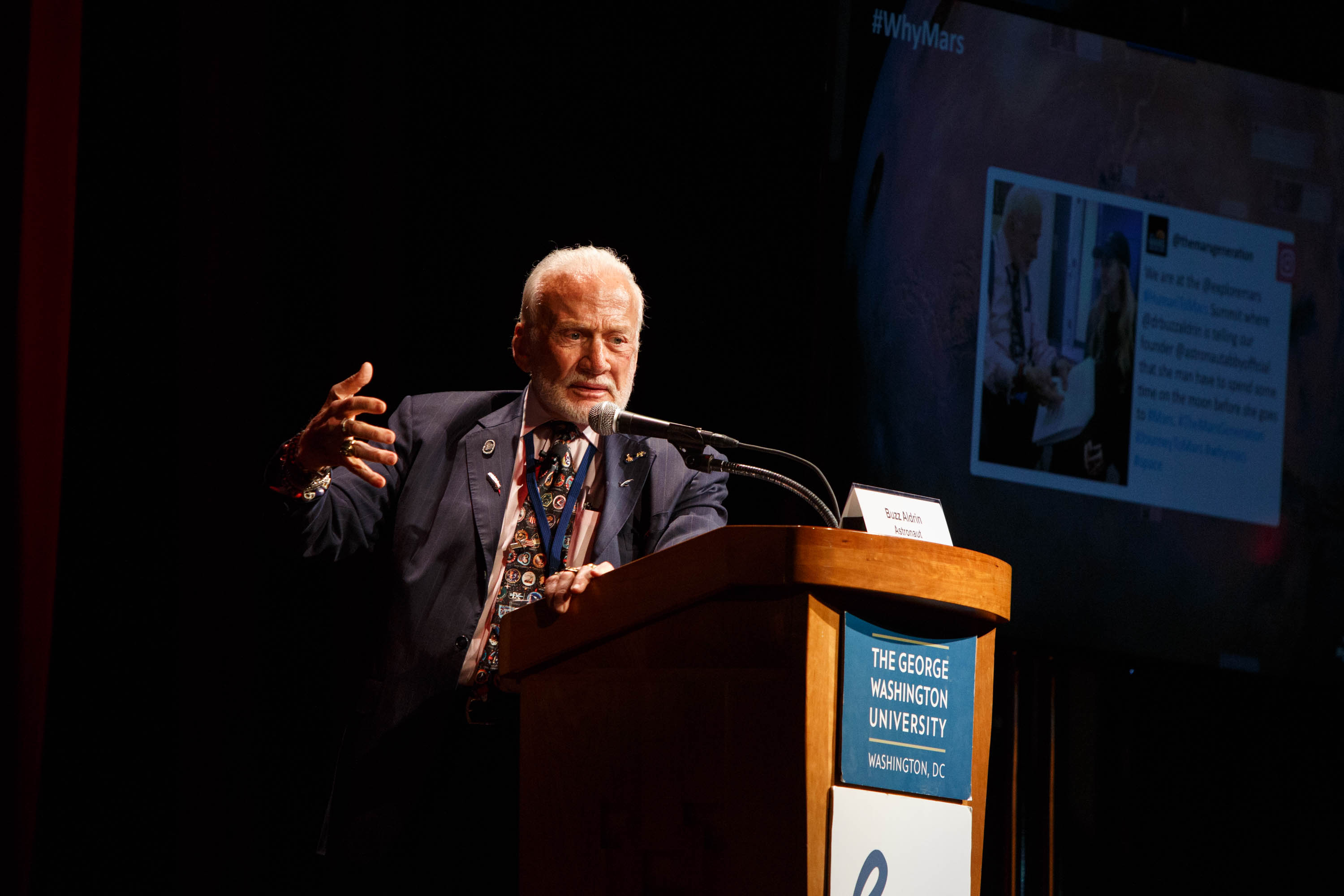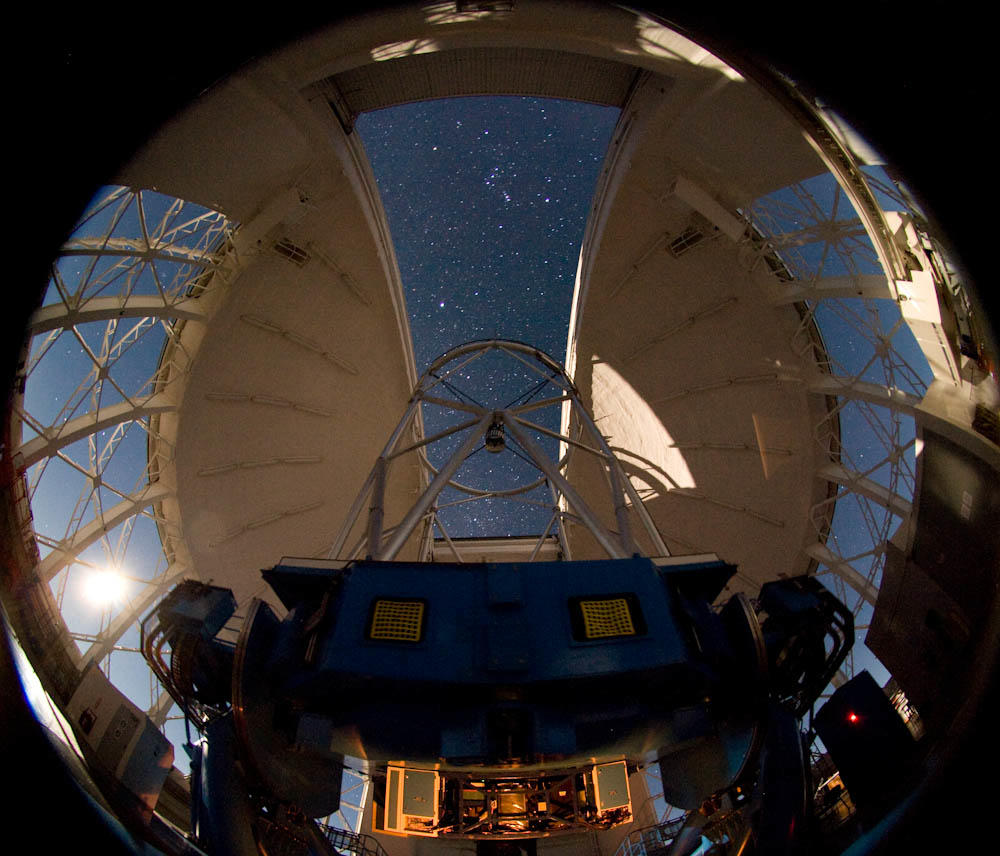By Kristen Mitchell
When it comes to visiting Mars, flags and footprints left behind are not enough, said astronaut Buzz Aldrin. Engineers, astronauts and aviation experts need to find ways to build a sustainable colony on Mars that can foster human exploration of space.
Those first astronauts to occupy Mars were likely born around 2000, Mr. Aldrin said.
“I believe that this nation, within two decades, will lead international crews to Mars to occupy,” he said. “Not to visit and come back and leave it empty, but to occupy before coming back.”
Mr. Aldrin spoke about his determination to get astronauts on Mars by 2030 at the Humans 2 Mars Summit Tuesday at Lisner Auditorium. The summit brought together government and industry leaders along with other experts to discuss the challenges of space travel and the next frontier in technology.
In 1969, Mr. Aldrin was the lunar module pilot on Apollo 11 and became the second person to walk on the moon alongside Neil Armstrong. Mr. Aldrin’s work on the Gemini 12 mission paved the way for that feat. In 1966, he proved humans could do useful work outside of the aircraft without life-threatening exhaustion by spending more than five hours on extravehicular activity, a record at the time.
Mr. Aldrin has continued to promote space exploration since he retired from NASA in 1971 and has advocated for a Mars mission. In December, Mr. Aldrin also became the oldest person to visit the South Pole at 86 years old.
The federal government needs to prioritize space exploration for NASA to send astronauts to Mars and foster a global coalition of space programs, Mr. Aldrin said. The United States is currently spending more than $6 billion on projects that are not directly related to getting astronauts on Mars. By investing in projects that will get astronauts there and tabling those that don’t, Mr. Aldrin said, it is possible to establish permanent Mars inhabitation by 2039.
Mr. Aldrin called for NASA to gradually phase out the International Space Station in favor of implementing less expensive cycler pathways technology that would allow for nearly continuous travel between Earth, the moon and Mars in reusable spacecraft. Technology innovation should be driven by the private sector, Mr. Aldrin said, with NASA serving in an advisory role.
“NASA does not need to be in the business of designing and operating space habitats any more than it needs to be in the business of designing the building it occupies,” he said.
The United States must work with other countries as part of a global coalition to get to Mars, Mr. Aldrin said, including China. With commercially available, low-cost space travel, scientists will be able to more easily travel to the moon to conduct research and set up permanent facilities. The European Space Agency has proposed a “Moon Village” that will allow for longstanding research projects and occupation of the moon.
In this village, the first generation of international astronauts will train for six months for their mission to Mars. They will rehearse fueling and assembling habitats from the lunar cycler, Mr. Aldrin said.
After training at a moon base, these first Mars colonists will commit to life on Mars at about age 30, knowing they are unlikely to ever return to Earth. Food will be flown in to help support the astronauts as new colonists arrive, but they will have to survive off food grown in base habitats.
They will also have to learn to adapt to a new kind of isolating life. Mr. Aldrin said the approach to Mars inhabitation is outbound biased.
“We envision that all the people that transit to Mars will remain there for the rest of their lives,” he said. “This requires very different thinking about how we live and work on Mars. I personally believe the psychological and mental health aspects deserve utmost attention.”
Mr. Aldrin said it has been an honor to spend the last 35 years dedicated to what he called the single most challenging and noble human pursuit of this century. He is heartened by the progress made since last year’s Humans 2 Mars Summit.
“I think we can all say with confidence that we are closer to Mars today than we have ever been, but let’s be certain that we develop a sustainable plan to stay on Mars,” he said. “No flags and footprints this time.”




